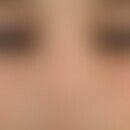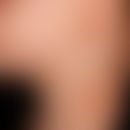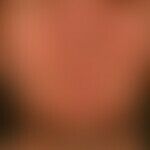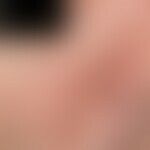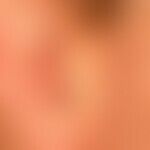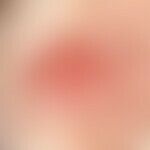Synonym(s)
HistoryThis section has been translated automatically.
DefinitionThis section has been translated automatically.
Misleading name for a dermatological clinical picture with centrofacially localized, "acne-like" angiofibromas occurring (isolated as a minus variant) in the multiorganic "tuberous sclerosis complex" (= Pringle ' s disease or Pringle-Bourneville's phacomatosis, see tuberous sclerosis).
Remark: The dermatological symptomatology is not infrequently the initial leading symptom of the underlying systemic disease and thus requires histological verification so that a reliable diagnosis can already be made on the dermatological side (see also the other dermatological-monitoric signs of tuberous sclerosis).
You might also be interested in
Occurrence/EpidemiologyThis section has been translated automatically.
EtiopathogenesisThis section has been translated automatically.
Autosomal-dominantly inherited mutations of the genes TSC1 (Tuberous Sclerosis gene 1; gene locus 9q34) and TSC2 (Tuberous Sclerosis gene 2; gene locus 16p13.3), which lead to disorders of the proteins hamartin (TSC1) and tuberin (TSC2), respectively. The disturbance of the physiological function of both proteins as growth regulators of nerve cells during embryonic development is discussed.
ManifestationThis section has been translated automatically.
Already becoming manifest in early childhood (3-10 years). With increasing age, especially postpubertal manifestations.
LocalizationThis section has been translated automatically.
face, symmetrical centrofacial, nose, cheeks, forehead
Clinical featuresThis section has been translated automatically.
In an acne-typical distribution pattern, multiple, disseminated, reddish-brownish, partly also skin-coloured, soft, 0.1-0.4 cm large, symptom-free papules. In the course of life, the primary efflorescences aggregate and grow, so that plaques and nodules can be observed in addition to papules. At first glance, an "acne-like" picture appears, often combined with seborrhoea. In contrast to acne, pustules and comedones are always missing.
HistologyThis section has been translated automatically.
- Thickened connective tissue stroma with pronounced lacunar vasculopathy. Epidermis unremarkable or irregularly acanthotic. Isolated cells with PAS-positive inclusions as well as with spindly or oval, clumpy nuclei.
- Immunohistology: Frequent detection of factor XIIIa-positive cells (FXIIIa is expressed on dermal dendritic cells).
Differential diagnosisThis section has been translated automatically.
- Basal cell carcinoma: No symmetry in appearance, no preferred disseminated nasolabial pattern.
- Acne vulgaris: No acute adenoma sebaceum, no comedones and pustules.
- Trichoepitheliomas: Skin-coloured, symptomless, mostly glassy, 0.2-0.5 cm large nodules in nasolabial arrangement.
- Cylindromas: Either solitary or multiple occurrence. Occurs mainly on the capillitium. The nodules or nodules are clearly larger than in Adenoma sebaceum. Brooke-Spiegler syndrome must be distinguished from solitary cylindromes (multiple cylindromes, possibly in combination with other adnexal tumours).
- Syringomas: Mostly skin-coloured nodules, hardly 0.2 cm in size, appearing in plural; mostly localized in the eyelid region.
TherapyThis section has been translated automatically.
External therapyThis section has been translated automatically.
In individual cases good results were achieved with the local application of Everolimus and Sirolimus ointment.
Internal therapyThis section has been translated automatically.
Progression/forecastThis section has been translated automatically.
LiteratureThis section has been translated automatically.
- Dill PE et al (2014) Topical everolimus for facial angiofibromas in the tuberous sclerosis complex. A first case report. Pediatric Neurol 51:109-113
- Pringle JJ (1890) A case of congenital adenoma sebaceum. Br J Dermatol 2: 1-14
- Greve B, Raulin C (2003) Medical dermatologic laser therapy. A review. dermatologist 54: 594-602
Incoming links (7)
Colloidalmilium; Dermabrasion; Multiple Trichoepithelioma ; Pringle-bourneville phacomatosis; Pringle, m.; Pringle tumor; Trichoblastoma;Outgoing links (17)
Acne (overview); Angiofibroma (overview); Basal cell carcinoma (overview); Brooke-spiegler syndrome; Co2 laser; Cryosurgery; Cylindrome; Dermabrasion; Erbium yag laser; Isotretinoin; ... Show allDisclaimer
Please ask your physician for a reliable diagnosis. This website is only meant as a reference.
